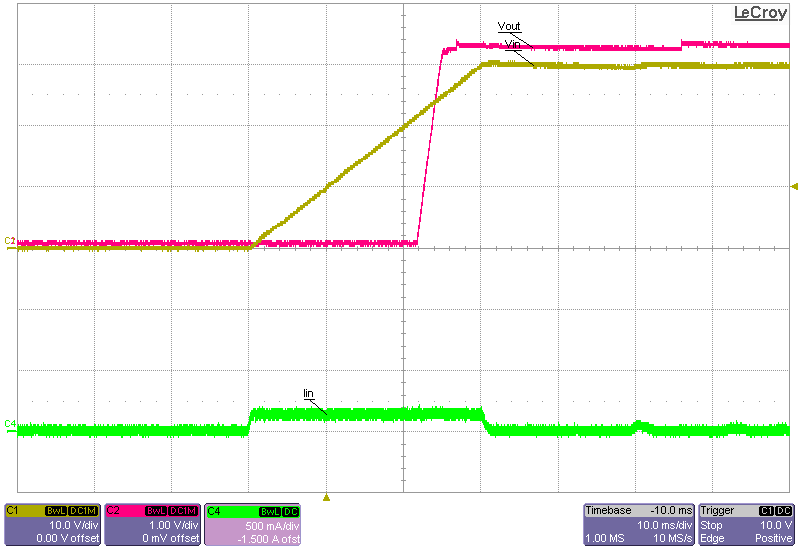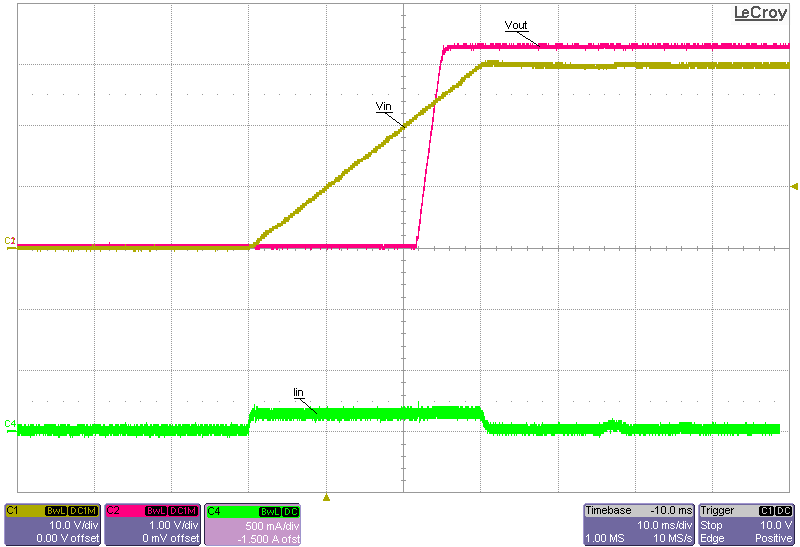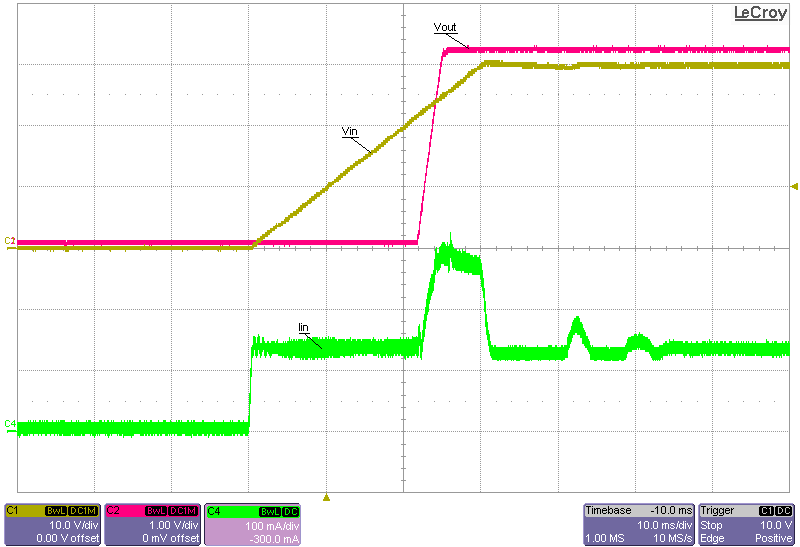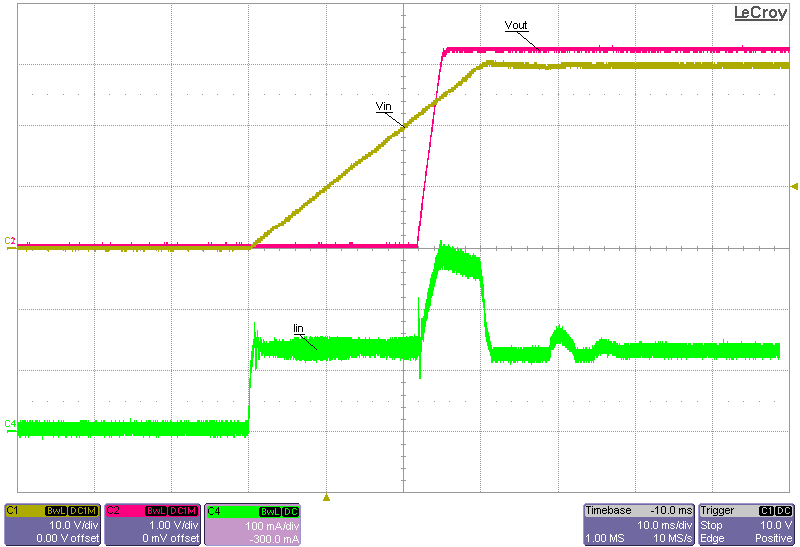TIDT234 November 2022
3.4 Start-up Sequence
The following set of figures show the start-up behavior between PFM and FPWM modes at 30-V input, at no load and 1-A load conditions.
 Figure 3-15 Start-up Into No Load, 30-V Input, PFM-Mode
Figure 3-15 Start-up Into No Load, 30-V Input, PFM-Mode Figure 3-16 Start-up Into No Load, 30-V Input, FPWM-Mode
Figure 3-16 Start-up Into No Load, 30-V Input, FPWM-Mode Figure 3-17 Start-up Into 1-A Constant-Current Load, 30-V Input, PFM-Mode
Figure 3-17 Start-up Into 1-A Constant-Current Load, 30-V Input, PFM-Mode Figure 3-18 Start-up Into 1-A Constant-Current Load, 30-V Input, FPWM-Mode
Figure 3-18 Start-up Into 1-A Constant-Current Load, 30-V Input, FPWM-Mode